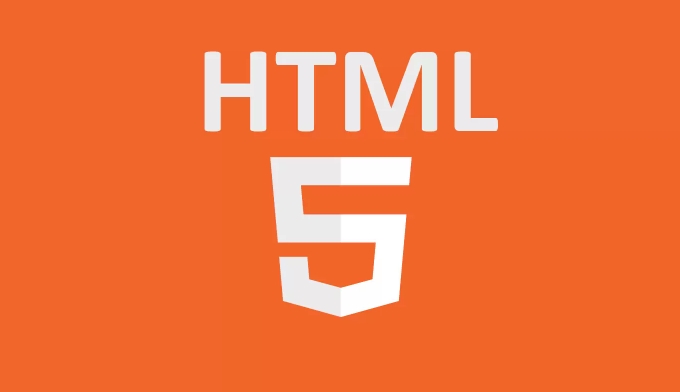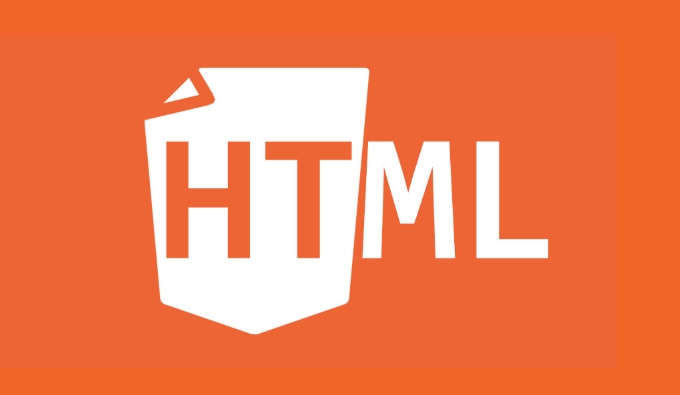Responsive design automatically adapts to screen size through media query, elastic layout and other technologies, which is suitable for smooth adaptation of multiple devices; adaptive design customizes the page structure for specific resolutions, loads corresponding views according to the device type, which is suitable for accurate adaptation of limited models. Key responsive skills include: 1. Use viewport meta tag to control zoom; 2. Use flex layout to achieve flexible layout; 3. Set breakpoints reasonably and adapt to pictures. Common adaptive practices include: 1. Dynamically set the rem font size to maintain proportions; 2. Use adapter libraries to improve development efficiency; 3. Custom rendering according to device characteristics. Other details such as avoiding fixed sizes, ensuring click areas, and real machine testing also need to be paid attention to. The two can be used in combination, the key is to choose the appropriate solution according to your needs.

When doing H5 page layout, responsive and adaptive design are two concepts that cannot be avoided. Their goal is to make the page look comfortable and easy to use on different devices, but the implementation method and applicable scenarios are slightly different. Only by understanding the difference between the two and mastering some practical skills can you make a truly useful H5 page.

What are responsive and adaptive?
Simply put, responsive layout uses media query, elastic grid and other technologies to automatically "perceive" the screen size and adjust the style; while adaptive layout designs different page structures for several specific resolutions and loads the corresponding views according to the device type.
For example: a responsive website may smoothly transition between mobile phones, tablets, and desktops; while an adaptive website may prepare three sets of interfaces for iPhone, iPad, and PC. When users access, the system determines the device type and then loads the corresponding style.

If your H5 content does not change much, the adaptation model is limited, and the adaptability is more direct; if you want the page to perform well on various screens, the responsiveness will be more suitable.
Key Tips for Responsive Layouts
To achieve responsive effects, there are three core points to pay attention to:

Use viewport meta tag
Add<meta name="viewport" content="width=device-width, initial-scale=1">to the HTML header, which is the basis for making mobile browsers scale correctly.Flexible box model and Flex layout
Usedisplay: flexto easily achieve element alignment and scaling. With properties such asflex-wrapandjustify-content, it can deal with layout problems under different widths well.Media query control breakpoints
Usually 2 to 3 main breakpoints (such as 768px, 1024px) are set, and different style rules are applied in different intervals. Don't write too many fine breakpoints, otherwise the maintenance cost will be high and the effect will not be obvious.
In addition, the processing of images is also very important. Remember to add max-width: 100% to the img tag to prevent it from breaking the container.
Common practices for adaptive layout
The core of an adaptive layout is to identify the device type or resolution and then load the corresponding style or component. Here are a few common practices:
Dynamically set HTML root font size (rem scheme)
Dynamically calculate and setfont-sizeof thetag through JavaScript, so that the entire page is laid out based on this value. This allows for consistent visual proportions across devices.Use adapter libraries (such as amfe-flexible)
This type of library can help you automatically complete the adaptation of rem. Combined with the postcss-pxtorem plug-in, it can also automatically convert px to rem, making it more efficient in development.Customized rendering for device characteristics
For example, determine whether it is a WeChat browser, iOS or Android, and load different styles or components. This method is suitable for H5 activity pages that require a deep optimization experience.
However, it should be noted that although the adaptation solution is accurate, if the adaptation logic is too complex, it will affect performance and maintainability. It is recommended to adapt only to key equipment, rather than covering all models.
Small details are easy to ignore but important
Some small places are often overlooked, but they actually have a great impact:
Avoid fixing height and width
Try to use percentage, vw/vh or flex to control the size so that it will not deform or overflow under different screens.Pay attention to the size of the click area
The mobile finger operation is not as accurate as the mouse. It is recommended that the click area of the button or link is at least 44x44px, ensuring ease of operation.Test the performance of real machines
Many times it seems okay to watch in the browser, but actually there will be problems such as scaling abnormalities and blurred fonts on the phone. If possible, it is best to use real machine debugging, or use the remote real machine test platform.
Basically that's it. Responsiveness and adaptability are not either-or choices, and they can often be used together, such as using responsiveness as the basis and then making some fine-tuning according to different devices. The key is to understand the requirements, choose the right method, and don’t blindly pile up code.
The above is the detailed content of Building Responsive and Adaptive H5 Layouts. For more information, please follow other related articles on the PHP Chinese website!

Hot AI Tools

Undress AI Tool
Undress images for free

Undresser.AI Undress
AI-powered app for creating realistic nude photos

AI Clothes Remover
Online AI tool for removing clothes from photos.

Clothoff.io
AI clothes remover

Video Face Swap
Swap faces in any video effortlessly with our completely free AI face swap tool!

Hot Article

Hot Tools

Notepad++7.3.1
Easy-to-use and free code editor

SublimeText3 Chinese version
Chinese version, very easy to use

Zend Studio 13.0.1
Powerful PHP integrated development environment

Dreamweaver CS6
Visual web development tools

SublimeText3 Mac version
God-level code editing software (SublimeText3)

Hot Topics
 What Does H5 Refer To? Exploring the Context
Apr 12, 2025 am 12:03 AM
What Does H5 Refer To? Exploring the Context
Apr 12, 2025 am 12:03 AM
H5referstoHTML5,apivotaltechnologyinwebdevelopment.1)HTML5introducesnewelementsandAPIsforrich,dynamicwebapplications.2)Itsupportsmultimediawithoutplugins,enhancinguserexperienceacrossdevices.3)SemanticelementsimprovecontentstructureandSEO.4)H5'srespo
 H5: The Evolution of Web Standards and Technologies
Apr 15, 2025 am 12:12 AM
H5: The Evolution of Web Standards and Technologies
Apr 15, 2025 am 12:12 AM
Web standards and technologies have evolved from HTML4, CSS2 and simple JavaScript to date and have undergone significant developments. 1) HTML5 introduces APIs such as Canvas and WebStorage, which enhances the complexity and interactivity of web applications. 2) CSS3 adds animation and transition functions to make the page more effective. 3) JavaScript improves development efficiency and code readability through modern syntax of Node.js and ES6, such as arrow functions and classes. These changes have promoted the development of performance optimization and best practices of web applications.
 How to implement h5 to slide up on the web side to load the next page
Mar 11, 2024 am 10:26 AM
How to implement h5 to slide up on the web side to load the next page
Mar 11, 2024 am 10:26 AM
Implementation steps: 1. Monitor the scroll event of the page; 2. Determine whether the page has scrolled to the bottom; 3. Load the next page of data; 4. Update the page scroll position.
 H5: How It Enhances User Experience on the Web
Apr 19, 2025 am 12:08 AM
H5: How It Enhances User Experience on the Web
Apr 19, 2025 am 12:08 AM
H5 improves web user experience with multimedia support, offline storage and performance optimization. 1) Multimedia support: H5 and elements simplify development and improve user experience. 2) Offline storage: WebStorage and IndexedDB allow offline use to improve the experience. 3) Performance optimization: WebWorkers and elements optimize performance to reduce bandwidth consumption.
 H5 Code: Accessibility and Semantic HTML
Apr 09, 2025 am 12:05 AM
H5 Code: Accessibility and Semantic HTML
Apr 09, 2025 am 12:05 AM
H5 improves web page accessibility and SEO effects through semantic elements and ARIA attributes. 1. Use, etc. to organize the content structure and improve SEO. 2. ARIA attributes such as aria-label enhance accessibility, and assistive technology users can use web pages smoothly.
 Is H5 a Shorthand for HTML5? Exploring the Details
Apr 14, 2025 am 12:05 AM
Is H5 a Shorthand for HTML5? Exploring the Details
Apr 14, 2025 am 12:05 AM
H5 is not just the abbreviation of HTML5, it represents a wider modern web development technology ecosystem: 1. H5 includes HTML5, CSS3, JavaScript and related APIs and technologies; 2. It provides a richer, interactive and smooth user experience, and can run seamlessly on multiple devices; 3. Using the H5 technology stack, you can create responsive web pages and complex interactive functions.
 Explore the best responsive layout frameworks: the competition is fierce!
Feb 19, 2024 pm 05:19 PM
Explore the best responsive layout frameworks: the competition is fierce!
Feb 19, 2024 pm 05:19 PM
Responsive layout framework competition: who is the best choice? With the popularity and diversification of mobile devices, responsive layout of web pages has become more and more important. In order to cater to the different devices and screen sizes of users, it is essential to adopt a responsive layout framework when designing and developing web pages. However, with so many framework options out there, we can’t help but ask: which one is the best choice? The following will be a comparative evaluation of three popular responsive layout frameworks, namely Bootstrap, Foundation and Tailwind.
 Is h5 same as HTML5?
Apr 08, 2025 am 12:16 AM
Is h5 same as HTML5?
Apr 08, 2025 am 12:16 AM
"h5" and "HTML5" are the same in most cases, but they may have different meanings in certain specific scenarios. 1. "HTML5" is a W3C-defined standard that contains new tags and APIs. 2. "h5" is usually the abbreviation of HTML5, but in mobile development, it may refer to a framework based on HTML5. Understanding these differences helps to use these terms accurately in your project.






